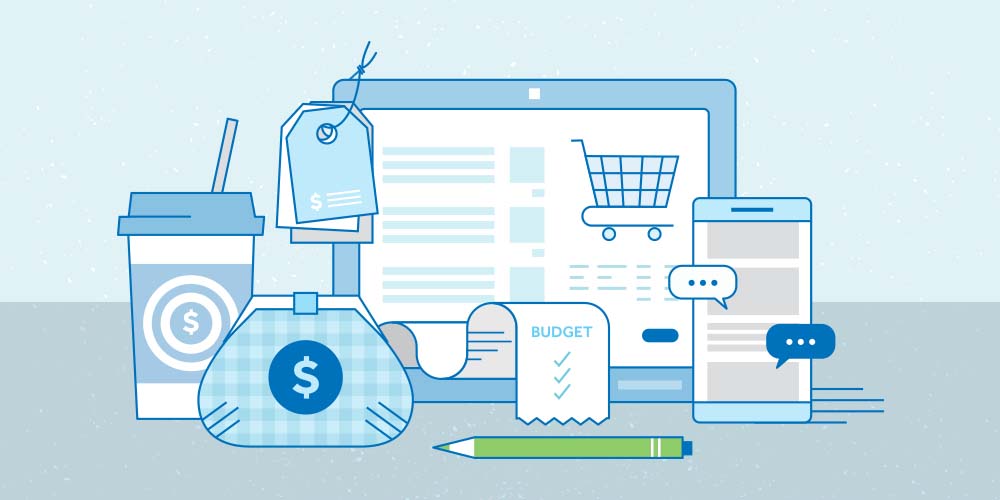For years the volume of purchases people make online versus in person has been steadily increasing. Add the COVID-19 pandemic into the mix and that trend has skyrocketed.
According to Statistics Canada, online spending by Canadians grew by $27 billion in just two years — from $57.4 billion in 2018 to $84.4 billion in 2020*. Getting what you want delivered straight to your door in as little as a few clicks is efficient and convenient (perhaps a little too convenient in some cases), hence the growing surge in popularity.
If you've ever felt a pang of regret after clicking the "complete order" button, or if you've hesitated to embrace online shopping because of security concerns, here are four things you can do to help you feel good about your online purchases.
1. Track your spending and compare to your budget
It may sound obvious, but the best way to keep on eye on how much you're spending online is to consciously track it (yes, that means more than a check-in on your account balance every other week).
If you're not aware of how much you've spent (online or offline), you might be spending money you don't have. This is where a budget tracker comes in handy. It can be an app or an old-school pen and paper. Either way, noting each transaction and deducting it from your budget will keep you on track.
2. Minimize impulse spending with clear goals
A common pitfall of online shopping is how hard it can be to avoid impulse buying. Unlike physical stores that close (and don't encourage shopping in your pajamas), the internet is open 24/7 (and blissfully unaware of your pajamas).
Having defined short-term goals can help you avoid distraction by convenient purchases. These goals don't have to be big things — it can be as simple as focusing your spending money for the month on one special purchase (we have a goal tool that can help!), perhaps a new pair of shoes or a weekend getaway.
This way you'll think twice before impulsively buying an item if it means sacrificing the special purchase goal you had in mind.
3. Reduce temptation from social media
Ever felt like items you're interested in buying are following you, showing up randomly on your social media feeds? You're not imagining things — they are!
Try using a 24-hour rule to lessen temptation next time you're scrolling and an item catches your eye. Save the link on your feed or open it in a browser window that you can revisit after a day or so. Giving yourself that time to really think about the purchase (and whether it aligns with your goals as mentioned above) will help reduce the "just because" factor.
4. Protect your info by consolidating your payments
Statistics Canada reported that among Canadians who didn't shop online, 23% said the reason was security or privacy concerns*. Being cautious about who you're providing your banking information to is good (keep it up!). But it's perfectly safe to shop online with a trusted retailer through their secure site.
Not sure how to validate whether a site is secure? Check the address bar and you should see "https" in front of the URL — that "s" means you're in a secure environment and can feel safe providing payment details.
As an added precaution, consider only using one credit card to make any online purchases. Consolidating your online shopping onto one card contains the amount of payment information you're sharing and makes it easier to spot potential fraud if it ever does occur. Check out our other tips for staying ahead of credit card fraud.
Following these tips next time you're ready to take full advantage of purchasing at your fingertips will help you feel confident at every "add to cart" moment.
Source: https://www150.statcan.gc.ca/n1/pub/11-627-m/11-627-m2021048-eng.htm


